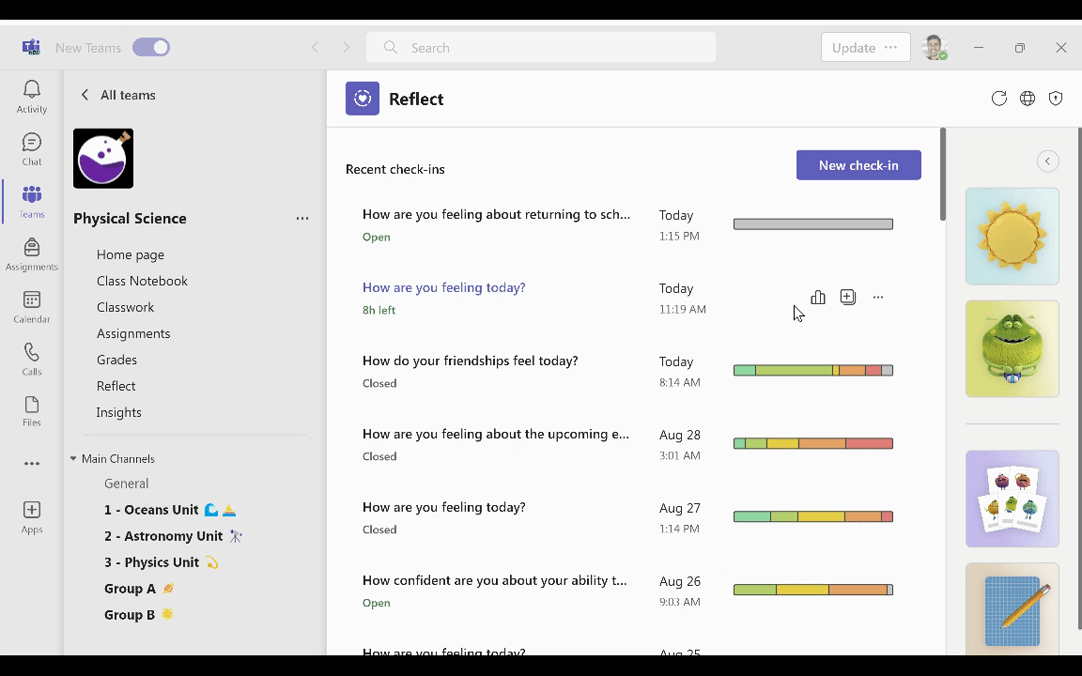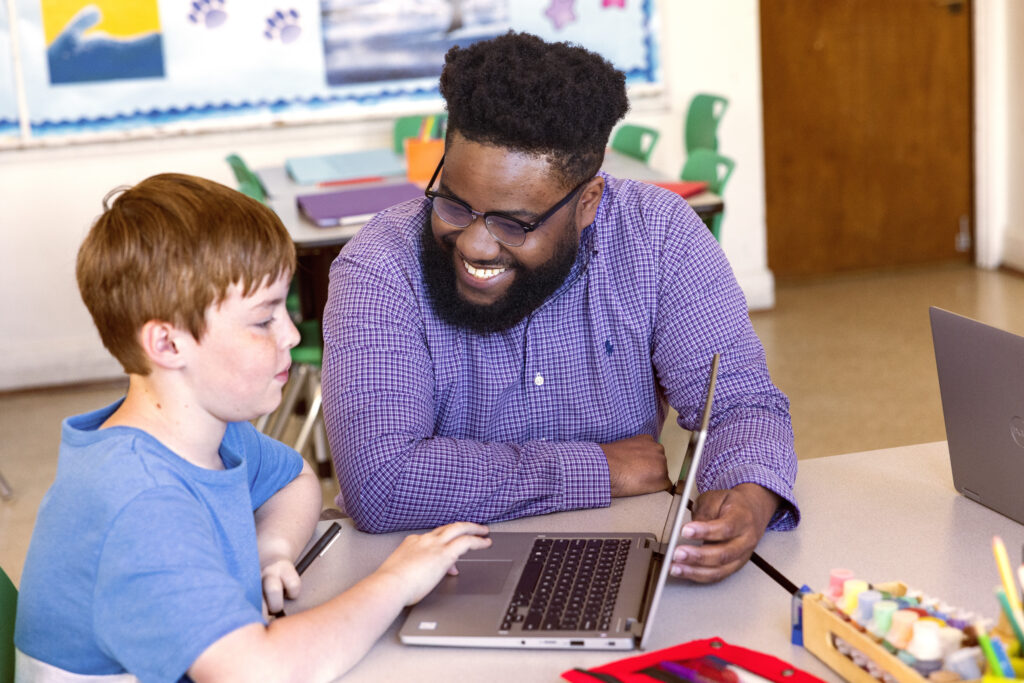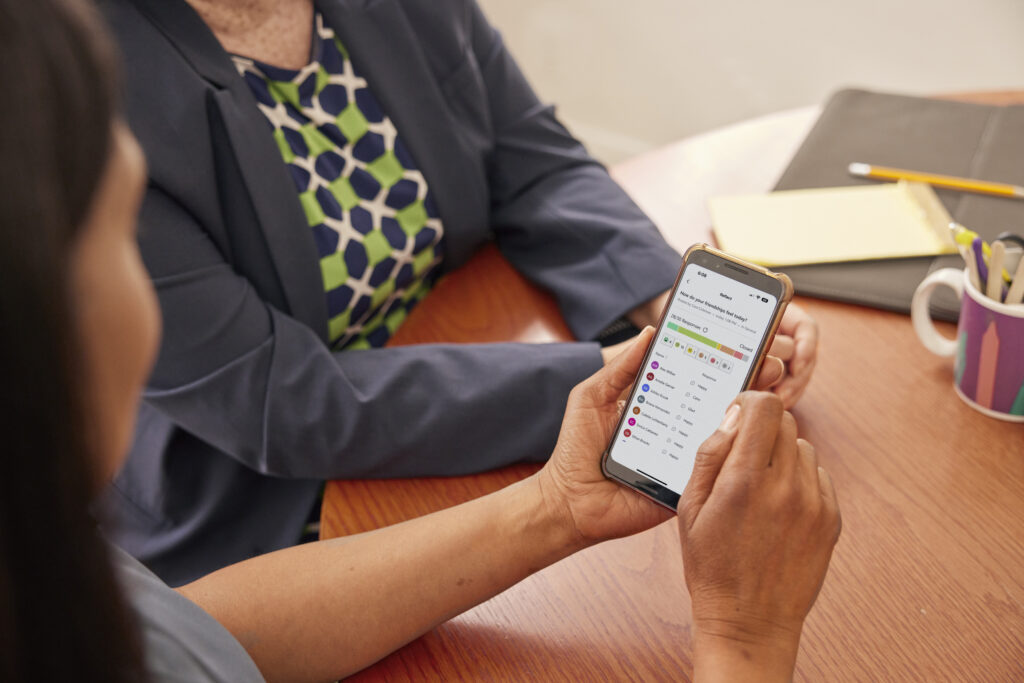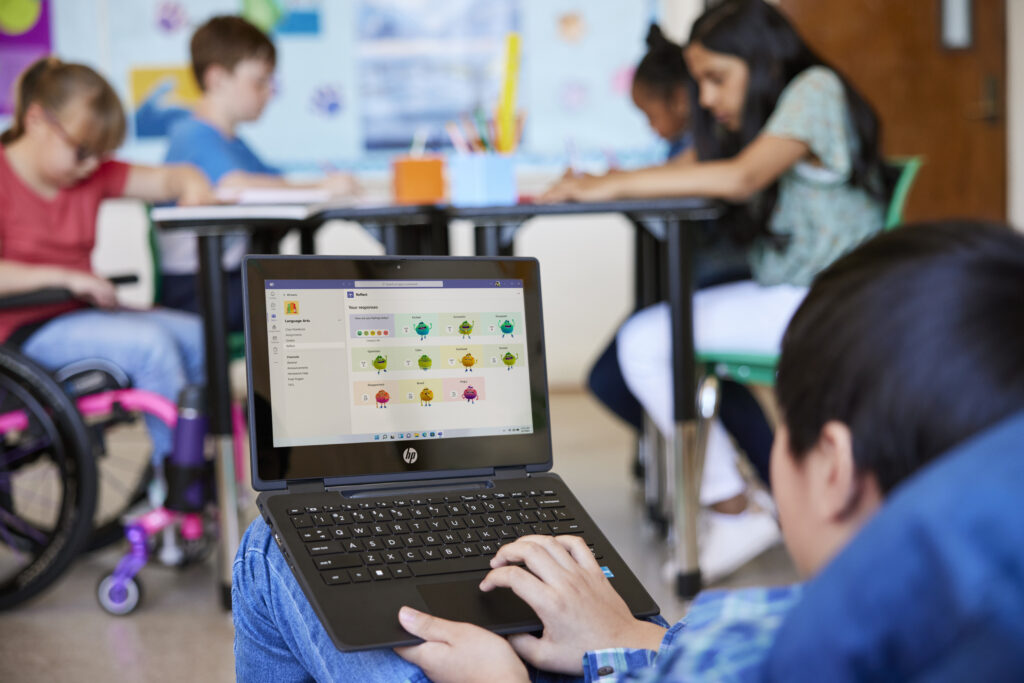Social and emotional learning (SEL) in the classroom helps students boost academic achievement and develop critical life skills. It’s how students develop healthy self-identities, constructively manage their emotions, and develop positive relationships.
To celebrate and highlight the transformative power of SEL, March 8 marks the fifth annual SEL Day, with this year’s theme focusing on Today’s Students, Tomorrow’s Leaders.
How do you build a healthy emotional and mental wellness culture in your school—one that fosters well-being and positive coping mechanisms? Join Microsoft Education to celebrate SEL Day 2024 with these eight strategies to support well-being in your school community.
1. Get started with Microsoft Reflect
Microsoft believes that technology can play a valuable role in supporting social and emotional learning for students. One powerful well-being tool is Reflect, a Learning Accelerator designed to help educators prioritize their students’ emotional wellness. Reflect is a safe space for students to reflect on their emotions and build self-awareness. With Reflect, students share how they feel, and educators can view and interact with students’ responses. Over time, educators can access and analyze Reflect’s data at both individual and class levels.

Educators can analyze Reflect’s data at both individual and class levels.
Reflect includes additional resources like breathing exercises—shown to have a significant impact on student learning. Educators can create custom check-in questions in Reflect that encourage students to open up and share their feelings while building emotional vocabulary. Check out the ready-to-use activities, lessons, and materials like Minecraft Education and Kahoot games, along with Flip discussion topics to help extend the social-emotional impact of Reflect. Discover how you can seamlessly integrate Reflect into your classroom routine to foster student well-being in your class.
Reflect has many new features and activities, including:
- A web application to create check-ins, track trends, and activities.
- Export to Excel—you can export check-in data to Excel for analysis and tracking.
- Reflect exit tickets in Teams Assignments.
- Favorites list to quickly access your preferred brain break activities.
- Integration with your LMS.
Learn more about what’s new in Microsoft Reflect.
2. Use activities and lessons from Reflect
Incorporate SEL into your classroom with ready-to-use activities, lessons, and materials from Reflect. Check out Reflect’s Activity Hub to find a curated collection of activities designed to promote well-being, connection, and expression. Additionally, Reflect has partnered with Calm—the leading mental health brand with the #1 app for meditation, sleep, and relaxation—to integrate science-backed content designed to help users meet their goals. Explore all the Calm activities in the Reflect app.
Reflect has also partnered with several of your favorite classroom tools like Minecraft Education, Flip, and Kahoot! to expand SEL. Through these partnerships, you and your students can have safe spaces for reflecting, setting goals, and discussing emotions. Explore Reflect activities for student engagement for ideas on how to implement Reflect activities in your classroom.

Educators can use SEL activities in the classroom to help build students’ social-emotional skills.
3. Expand learning with Reflect World in Minecraft
Engaging activities in Minecraft Education can support well-being in your classroom. Step into Reflect World in Minecraft and explore a vibrant and colorful world! Students will develop social-emotional skills through a creative and immersive experience by using collaboration, problem solving, and communication.
Students can connect the experience in Reflect World to real world feelings, actions, and challenges that they face. After playing, discuss each emotion and the adventure it leads to, and the ways students can regulate their emotions in real life. Start the adventure and explore Reflect World with your students.
4. Become familiar with the CASEL Framework
Many school districts have used the CASEL Framework to establish preschool to high school learning standards and competencies. According to the framework, there are five core social and emotional competencies that can be taught and applied from childhood to adulthood and across diverse cultural contexts. They are self-awareness, self-management, social awareness, relationship skills, and responsible decision-making. Read more about the CASEL Framework.
5. Share the compelling research on SEL in schools
The power of social-emotional learning in schools is well documented. So, if you are trying to make a case for SEL-focused strategies with your fellow educators, administrators, or parents, point them to the latest data and research. According to an EdWeek Research Center survey conducted in October 2022, 84% of teachers said that SEL strategies and approaches had a positive impact on skills such as collaboration, communication, and critical thinking. Another study—conducted by RAND—had 90% of teachers agreeing that promoting social-emotional learning in the classroom improved their students’ academic achievement.
And students are on board too, reporting an increased sense of safety and support, reduced symptoms of depression and anxiety, as well as reductions in bullying and aggression. SEL has also shown to be consistently effective across demographic groups, whether socioeconomic, cultural, or regional.

Reflect is designed to help educators prioritize their students’ emotional wellness with custom check-ins, ready-to-use activities, lessons, and more.
6. Share successes
What does well-being look like in your classroom or in your school? If you have had some successes—whether minor or huge—let your fellow educators know so they can integrate what is working into their own practice! Contribute to a community of practice focused on promoting social and emotional learning. The Social-Emotional Learning in Education community has just passed 30,000 members and is a great resource for educators with an interest in SEL, mindfulness, and emotional intelligence.
And why stop there? Champion the power of SEL with families and your community to let everyone know your dedication to evidence-based social-emotional learning techniques, and how powerful the real-world impact can be.
7. Show some kindness to yourself and your colleagues
A growing body of evidence demonstrates that focusing on educator social and emotional competence can also improve teacher well-being. In fact, educators with strong SEL skills have higher job satisfaction and less burnout and report feeling more effective at their jobs and lower levels of job-related anxiety. So, what can you do this SEL Day? To express gratitude to others, write a note of appreciation to your colleagues, students, or parents.
To show some kindness to yourself, try taking a moment to recharge. Check out Calm’s mindfulness content in Reflect, including guided mindfulness sessions, movement activities, and focus music to foster a happier and more balanced classroom. As a bonus, teachers and students can enjoy an exclusive 40% discount on a subscription to Calm, providing a wealth of activities designed specifically for personal rejuvenation.
8. Join the SEL Day celebration!
Sign up at SELDay.org to show your support of social-emotional learning. You could organize a SEL Day activity in your school, district, or community, attend a virtual event or even create a video, podcast episode, or blog post! You can also participate in the SEL Day Summit 2024—a free, all-day online event showcasing SEL best practices, with keynote sessions featuring student perspectives on SEL in the classroom, as well as outcomes and implications from new SEL research studies.
Helping students to thrive
When students develop and practice SEL skills, they exhibit higher school functioning, with positive effects on academics lasting for years, with academic performance—according to one analysis—scoring an average of 13 percentile points higher than students who did not learn those skills.

With Reflect, students share how they feel, and educators can view and interact with students’ responses.
It is clear: SEL has a positive and lasting impact on students, educators, communities… and the world! An effective integration of SEL skills requires ongoing planning, implementation, and evaluation, yet this integration often enhances existing systems of student support. Together, we can help students develop a growth mindset, navigate their emotions, and build a foundation for success.
SEL Day is an opportunity to bring awareness to mental health and the resources available to support it. Create a check-in with Reflect this SEL Day and provide an opportunity for everyone to share any concerns or stressors they might be carrying.
Learn more and get additional information with these great resources!







